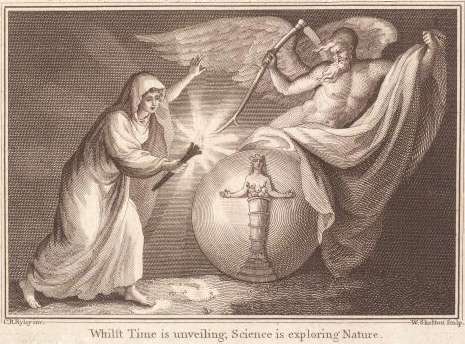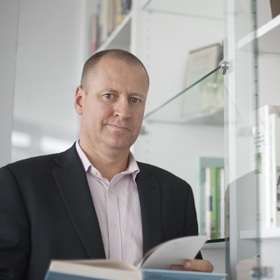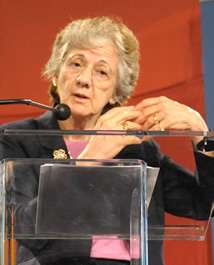Unusual Suite of “Women in Science” Initiatives Hailed: Special Report
 Scientists are hailing an Australian institute’s unusual raft of initiatives aimed at wiping out science gender gaps.
Scientists are hailing an Australian institute’s unusual raft of initiatives aimed at wiping out science gender gaps.
Walter and Eliza Hall Institute of Medical Research Director Douglas Hilton’s battery of new policies include “hot desks” for scientists’ children; a breastfeeding room; conference travel pay for scientists’ children and minders; grants for female lab heads; technical help and potential job sharing for post doc moms; accelerated post-doc tracks. Some new policies are so aggressive they aren’t allowed in the US because they support women with kids, but not men. When Hilton came on board five years ago, he saw none of his 20 department heads and senior professors were women, despite a female director, he wrote in Nature. The remedy was “simple,” he wrote: he upped the number to four, and asked his women post docs what to do next.
“Policies like this are essential,” Nancy Hopkins, Ph.D., told Bioscience Technology. Hopkins, an MIT biologist, led a landmark study finding gender gaps at MIT.
“I just returned from Australia’s annual conference on women in astronomy,” Yale University astrophysicist Meg Urry, Ph.D. told Bioscience Technology. Urry is president of the American Astronomical Society, and founder of Women in Astronomy. “I was struck by how advanced Australians were in addressing gender equity. To read Hilton’s article solidifies that opinion: at least some Australians are true leaders.”
“Hilton is a hero,” said Emory University anthropologist and “Women After All” author Melvin Konner, Ph.D., M.D. “I went to a conference last year that asked me to nominate a young person to attend. When she wanted to bring her baby, they balked, although the conference was about parenting. Hilton’s policies deserve wide imitation.”
Some noted the policies could be even better.
 “Heartening and slightly depressing,” Hunter College psychologist and gender-equity expert Virginia Valian, Ph.D., told Bioscience Technology. She and others noted the Australian program might want to give similar breaks to fathers, and actively address implicit biases research says all scientists—male and female—possess.
“Heartening and slightly depressing,” Hunter College psychologist and gender-equity expert Virginia Valian, Ph.D., told Bioscience Technology. She and others noted the Australian program might want to give similar breaks to fathers, and actively address implicit biases research says all scientists—male and female—possess.
But the bottom line, said many: Hilton has surpassed many US institutes and companies.
“A great example of how one person in leadership can make an extraordinary difference,” Ben Barres, Ph.D., told Bioscience Technology. Barres, Stanford University Neurobiology Department chairman, speaks often on gender issues. “I think [US] academia will get there. The question is when will startup, pharma and VC worlds diversify?”
“American universities are way, way behind,” former US National Science Foundation (NSF) president, and current American Institute of Biosciences president, Rita Colwell, Ph.D., told Bioscience Technology. Colwell is also former president of the American Association for the Advancement of Science, and former president of the American Society for Microbiology (ASM).
“We talk the talk. We don’t walk the walk.”
The US
The US science gender gap is narrowing. A recent Cornell University experiment found hypothetical women were chosen over hypothetical men for tenure track science jobs 2:1. This is potential good news for (real) women with bachelor’s degrees in science, technology, engineering, and math (STEM), as they have been earning PhD’s at similar rates as men since the 1990’s.
But “huge” problems remain, said Hopkins. Women are still hired before tenure track—for post doc positions et al—in far fewer numbers out of school. So, as was noted in a 2014 study, even in female-friendly biology, she said: “The pipeline has already leaked before women apply for faculty jobs…Labs are already way below 50 percent.”
Nature put it thusly: “Universities in the United States employ many more male scientists than female ones. Men are paid more, and, in fields such as mathematics, engineering, and economics, they hold the majority of top level jobs.” Reasons have as much to do with bias, say watchers, as crippling (read: non-existent) child-care policies.
See Bioscience Technology article on a study targeting bias in both male and female scientists.
 Helping scientists—and presidential candidates—stop viewing women as “other”
Helping scientists—and presidential candidates—stop viewing women as “other”
Colwell told Bioscience Technology Hilton attacks the problem from “multiple approaches.” But one thing he and others miss is “the targeting of innate bias. Many steps Hilton took are appropriate and useful, among them putting women on committees to select speakers and award promotions.” The ASM has addressed this, too, she said.
“Hilton is also ensuring key meetings are held within the normal workday for people with children. He is providing nursing mothers a necessary place to breast feed or collect milk.”
But it is key, she said, to “get at the most difficult part, which is evolutionary or tribal.” In prehistoric times, “if you were `other,’ for safety, you were excluded.” This ancient fear, Colwell said wryly, perhaps explains Donald Trump’s recent bizarre public fixation on Fox anchor Megyn Kelly’s “menstrual” state.
“We should not forgive innate biases like this,” Colwell told Bioscience Technology, “but we should not ignore them either. We all have biases. A 2012 study found that, handed identical CV’s, both men and women researchers gave ‘Johnny’ higher marks and salary than ‘Jane.’ An initiative called Project Implicit out of Harvard University has found we can be made to recognize our own biases, and remove them from decision-making.”
Still, she said, while some US institutes are tackling “innate bias” through programs like Project Implicit, more aren't. This month’s Harper’s describes, she said, an engineering student whose mentor keeps telling her to wait for male scientists to build her inventions, and a Ph.D. addressed by her first name while male colleagues are called “doctor.” “These things say to women: we still don’t take you seriously.”
Hilton’s program “is a good start, and US all university departments should be interested. But I am sure one of my colleagues will say, `Good luck with the school of engineering, of architecture, the physics department.’” A study showing women were hired for orchestras only after all candidates auditioned behind screens—and on carpets, to muffle high heels—indicates all disciplines “need to understand their biases.”
Catherine Didion is director of the National Academies of Science’s (NAS) Committee on Women in Science, Engineering, and Medicine. She praised Hilton’s balance of kids and post docs. “The US community is also discussing the way dragging out serial post doc jobs has a negative impact on women and men. It’s a big issue, discussed in an NAS report. I agree we need to look at this.”
Didion said financially helping women–not men—with kids may not be the best route, according to a Sloan Foundation report. A University of Pennsylvania study found women are wary of such woman-only approaches, fearing they signal “lack of commitment.” The NIH “included both men and women in a re-entry program, for example.”
But Didion said Hilton’s support for mothers at conferences is key. Groups in Boston and Georgia have found women have fewer international collaborators and smaller networks, she said. “Given the global nature of research, this is important. Perhaps foreign sabbaticals could be shorter, to accommodate caretaking parents.”
In the US, school rules and handbooks are more explicit about proper hiring. Still, the NAS’s “Beyond Bias and Barriers” has found women do fine once on the tenure track, but “getting them into the applicant pool” can be a big problem. Mentors are critical for grants and tenure. “More procedures are needed to lead people to double-check assumptions. We have a need-it-yesterday mentality which leads to snap judgments. We need to pause more and ask if we are making too many assumptions. Even Facebook is looking at this.”
No silver bullet
Valian said “what's unusual about Hilton's policies is the way he directly takes on the issue of giving women a chance to shine by ensuring they will be 50 percent of speakers. It's also unusual for one person to make efforts on so many fronts at once. It is heartening he has asked people (especially women) for ideas, and instituted a broad range of improvements. If more directors took such steps, gender equity would be closer to reality.”
Hilton’s policies are both novel and time-tested, Valian said. “Dan Sperber and I have a ‘petition’ and blog addressing the underrepresentation of women among invited speakers at conferences. The Central European University has taken a similar step.” Day meetings were launched by Johns Hopkins in 1996. “Underrepresentation of women among award winners and invited speakers has been highlighted in several places; I had a short piece on it in a 2013 Nature.” Many US schools have received NSF ADVANCE awards for gender-friendly innovations.
Still, many Hilton initiatives are novel, like younger faculty appointments, and financing conference travel. “A mix of initiatives like his is necessary: there is no silver bullet. His attitude is encouraging. He is spending the money.”
Reinventing the wheel—again
Hopkins applauds Hilton as there “is no question that progress in the US is highly uneven. Some universities are doing a fabulous job. Some have scarcely changed. Progress can stop. You can go backwards, when administrators stop paying attention, or an unsympathetic administrator comes in.”
She continued: “After MIT’s 1999 bias report” that she led, “I was asked to give well over 1000 talks. MIT invited presidents of eight other universities to come to MIT and discuss the issue, commit to studying it, making change, and meeting every year or so to exchange data. The group was the MIT 9. Some of these schools did an incredible job. The University of Michigan. Berkeley. The University of Wisconsin.” MIT wrote new family leave policies. “They put day care on campus. They aggressively recruited women to the administration. These things had huge impact. So when I read this article about Australia, my first reaction was, `Where have they been?’”
But, she said, “Then I thought: many US schools also need change.” It is important this keeps happening; that “some hero - like this man – comes in and makes things happen.”
Even MIT is “slipping in some areas, while staying ahead in others. Our president is very supportive, but it takes so much attention to keep moving ahead. It takes the leadership this man in Australia has shown, then oversight to maintain progress. You can slide back-—fast! It seems each generation has to re-invent the wheel.”
Policies—if not yet practice
Barres told Bioscience Technology many US institutions have gender-equity policies that don’t “go far enough for real change.”
Not enough resources go to child care. And primary care givers with kids, “particularly assistant professors, desperately need a salary supplement for child care. The tenure clock is such an unfair barrier to women with kids. The solution is not to do away with tenure, which is a vital protection, but to grant tenure the day they start their first job.” Today, “a successful Ph.D., a successful postdoc, and then winning a competitive job search… all this should be enough to prove you have the `stuff.’ Success will then depend on whether there is a supportive environment. It is patently absurd to put talented people in a risk averse (tenure-clock) mode at the start of their careers. And there is a very big difference between leaders saying they care—-and actually caring.”
Barres’ “hat is off” to Hilton “for hiring so many women faculty in such a short period, and for all his actions to help women with child-care. Any leader could do these things, but they rarely do, even when they are women. Although when Shirley Tilghman became president at Princeton, almost immediately, new faculty hires were half women.”
Things are worse in biotech, he says. “As the co-founder of a startup, I have been more than a little amazed at how few women are represented.”
Impressing even skeptics
Still, even Cornell University psychologist Steven Ceci, co-author of the above study finding women may soon be hired 2:1 over men, likes the Australian package. “Many (most?) of the recommendations are sensible. Meetings during school are very reasonable. No mother of school-aged children ought to be disenfranchised from faculty meetings.” Reduction in post doc length, and travel funds to let mothers (if also fathers) present at conferences “is also very reasonable,” he said. “My university does this and I suspect others do, too.”
Ceci worries “mandating 50 percent of speakers be female” could lead to “anti-merit” perceptions. He, too, prefers parent-friendly to mom-only policies. “The conversion of over-generous recruitment packages for well-established (usually male) scientists to female-friendly expenditures could result in missing out hiring” talented men.
Catalyzing science change
Urry noted all Hilton’s policies “may not be absolutely necessary, but they catalyze change on a much faster time scale. This is important for students who spend four years in college and four to six years in grad school. Waiting 50 years or longer for “gender equity” is too long.” (Fifty years is the earliest current gender-equal policies would bring a 50 percent equal faculty gender ratio to physics. Now the ratio is 20 percent: “pathetic.”)
Urry says the part-time lab head idea is “extremely interesting.” And it is “great” Hilton’s ideas came from women postdocs. “Some of the policies are familiar--like supporting family costs for meetings—some are new, like fellowships for female lab heads. This is analogous to funds used to attract (mostly male) faculty to university jobs in fields that pay big salaries, like economics or computer science. Dr. Hilton’s policies have simply done the same for women, making jobs attractive to people who put a high premium on combining family and career.”
Urry also thinks parental benefits should extend to men. But Hilton’s policies now “reflect the present reality that women do more than their share of family-related work….Probably the most important policy is child care which is convenient, affordable, and reassuring, a big draw for women and men.”
Amazing response
Regardless, said Gail Gasparich, Ph.D., of the Association for Women in Science (AWIS), gender policies need universal acceptance to survive. Many of Hilton’s policies “are proven best practices for recruiting and retaining women, as AWIS research has shown. However, policies won’t bring about institutional transformation without a change in institutional culture. Leaders throughout the institution must also buy in to the idea that gender equality is valued and needed.”
Such change may not be too far off. For, Hilton told Bioscience Technology, the response to his Nature article has been “amazing.” See the upcoming Bioscience Technology Hilton interview.





